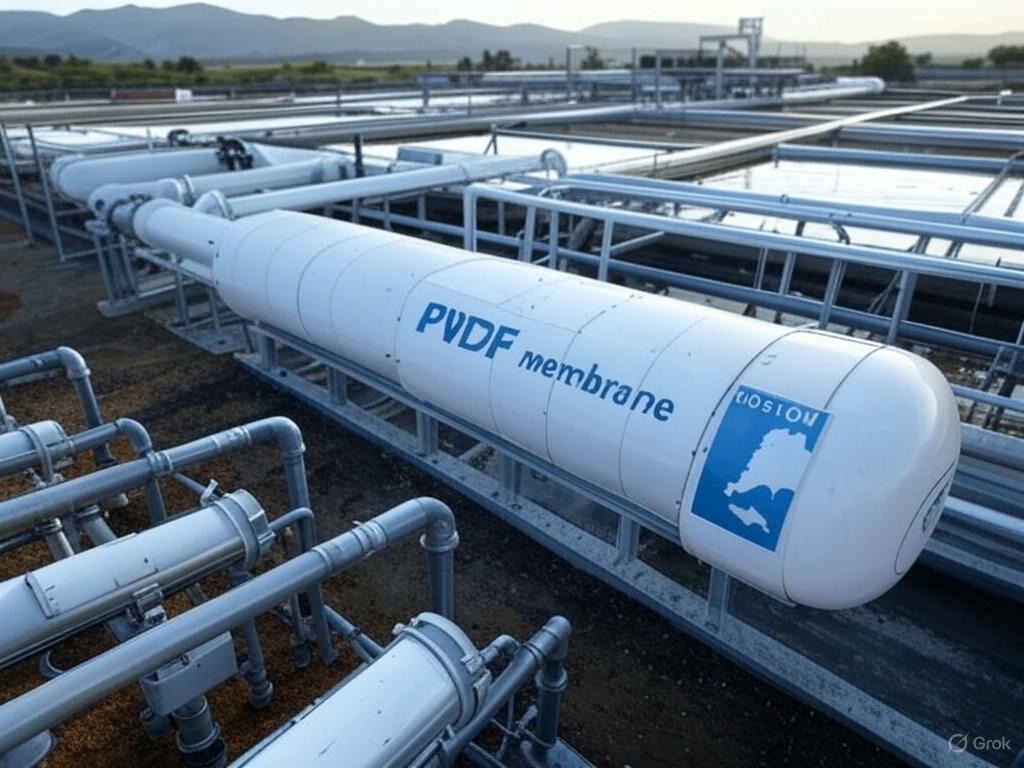
If you’ve ever turned on a tap expecting clean water or relied on a life-saving drug, you’ve likely benefited from a quiet hero in the world of filtration: PVDF membranes. In the United States, these tough, versatile membranes are seeing a surge in demand, and it’s no mystery why. With industries racing to meet stricter regulations, growing populations needing safe water, and cutting-edge technologies pushing boundaries, the need for high-performance filtration has never been greater. Let’s explore what’s driving this boom and why the PVDF membrane market in the U.S. is at its core.
First off, what’s so special about PVDF membranes? Made from polyvinylidene fluoride, they’re like the superheroes of filtration—strong, resistant to harsh chemicals, and able to handle high temperatures without breaking a sweat. Whether it’s purifying water, filtering proteins for pharmaceuticals, or tackling industrial wastewater, these membranes deliver top-notch performance where others might falter. In a country like the U.S., where innovation and quality are non-negotiable, it’s no surprise they’re in high demand.
One of the biggest drivers is the push for clean water. The U.S. is home to over 330 million people, and that number keeps climbing. Urban areas are sprawling, industries are expanding, and everyone needs water that’s safe to drink and use. But here’s the catch: our water sources aren’t getting any cleaner on their own. Aging infrastructure, industrial runoff, and climate challenges like droughts in places like California are putting pressure on water treatment systems. PVDF membranes, especially in ultrafiltration setups, are stepping up to the plate. They’re pros at removing bacteria, suspended solids, and other nasties from water, making them a go-to for municipal plants and private companies alike. The U.S. PVDF membrane market was worth over $190 million in 2022, and it’s only expected to grow as water scarcity and quality concerns intensify.
Then there’s the regulatory angle. The U.S. doesn’t mess around when it comes to environmental standards. Laws like the Clean Water Act and Safe Drinking Water Act set the bar high, forcing industries to clean up their act—literally. Whether it’s a chemical plant in Texas or a food processor in the Midwest, companies have to treat wastewater before it hits rivers or sewers. PVDF membranes shine here because they can handle tough conditions, like corrosive chemicals or high-pressure systems, without degrading. For businesses, investing in these membranes isn’t just about compliance—it’s about avoiding hefty fines and keeping operations running smoothly.
The biopharmaceutical industry is another big player in this story. The U.S. is a global leader in drug development, with hubs like Boston and San Francisco churning out everything from vaccines to cancer treatments. These products demand precision, and PVDF membranes are critical for that. They’re used to filter proteins, purify viruses, and ensure sterile conditions—tasks where even a tiny slip-up could ruin a batch worth millions. With the rise of biologics and personalized medicine, the need for reliable, high-performance filtration is skyrocketing. PVDF’s low protein-binding and high porosity make it a favorite, and as this sector grows, so does the market for these membranes.
But it’s not just about necessity—innovation is pushing the envelope too. American companies and universities are pouring resources into making PVDF membranes even better. Think higher efficiency, less fouling, and longer lifespans. Take a state like California, where water recycling is a lifeline. Researchers are tweaking PVDF technology to squeeze more clean water out of every drop, helping cities meet demand without tapping already strained resources. This drive for improvement isn’t just solving problems—it’s creating opportunities for U.S. manufacturers to lead globally.
Of course, it’s not all smooth sailing. PVDF membranes can be pricey to produce, which might make some budget-conscious industries hesitate. But here’s the thing: the upfront cost often pays off in durability and performance. Plus, as demand ramps up, economies of scale could bring prices down, making them more accessible. And with sustainability on everyone’s mind, the push for reusable or recyclable membranes could open new doors for growth.
Explore the full report – Download the PDF brochure.
So, where does this leave us? The U.S. PVDF membrane market is on an upward trajectory, driven by a perfect storm of need and ingenuity. From ensuring safe drinking water to powering cutting-edge drugs, the demand for high-performance filtration isn’t slowing down—and PVDF membranes are right there to meet it. For anyone watching this space, it’s clear: this isn’t just a trend; it’s a transformation. And in a country that thrives on solving big challenges, it’s exciting to see how these tiny membranes are making a massive impact.

